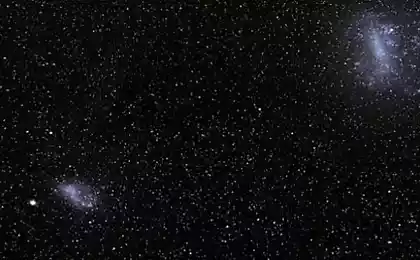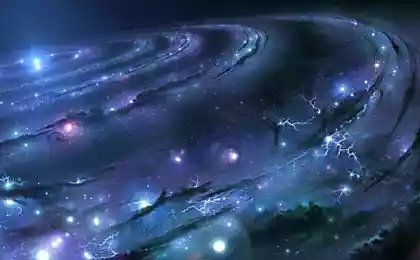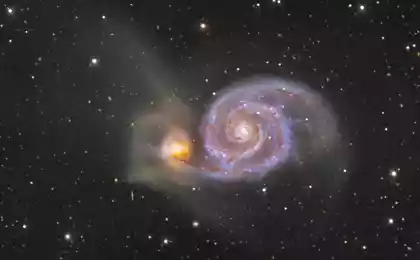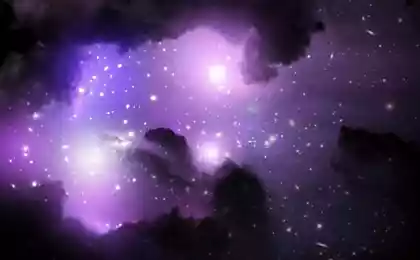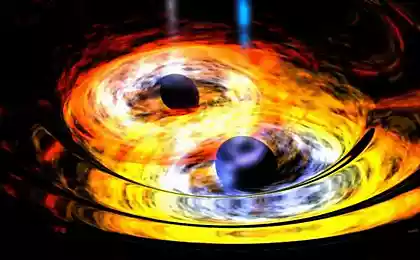567
Astronomers have discovered a new feature of our milky Way galaxy
Using the VISTA telescope working in the optical and infrared, astronomers have discovered a new feature of our milky Way galaxy, about which science has never before had representation.
Watching the unusually young variable stars-Cepheids, scientists discovered in the center of our galaxy, a ring-shaped structure, making the core of the milky Way is like a kind of "matryoshka" of very dense clusters of old and young stars.
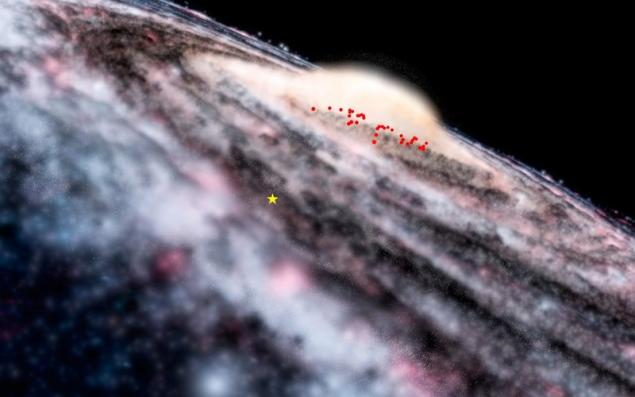
Since our Solar system is inside the milky Way, the study of the parts of the galaxy is a rather difficult task for scientists. We are in an astronomical object that stretches for 100,000 light years and is filled with about 100 billion stars. At the heart of our galaxy there is a huge jumper, consisting of massive and dense clouds of gas and dust, making the task of its study even more difficult.
To address this question, scientists use telescopes, similar to the VISTA telescope located at the Observatory, Paranal (Chile). It was built to explore the hidden secrets of the milky Way by scanning the sky wide-angle, high-quality optics. Using this tool, the research team of astronomers under the leadership of Istvan Decani from the University Pontificia Universidad Católica de Chile were able to detect a new component of our galaxy, which scientists had never seen before.
By studying stars of a certain class, astronomers from Chile found previously unseen disc-shaped structure, consisting of young and old stars, hidden by the dense clouds of the Central jumper. The red dots in the above image indicate the location of the newly detected stars. Yellow star, in turn, points to our place in the galaxy.
Using data collected in the framework of the Vista Variables in the Vía Láctea Survey (VVV) in the period from 2010 to 2014, astronomers have discovered 655 candidates for the role of stars of class of the Cepheids. These stars have one unique feature. The brightness can very quickly change in a matter of months and even days.
Class of Cepheids is divided into two subclasses. One of them are stars that are much younger than those represented in another. Among the 655 is discovered astronomers have determined that 35 of them belong to the subclass of young bright stars. They are usually klassificeret as classical Cepheids. These astronomical objects are very different from older stars another subclass, found in the Central crosspiece of the milky Way.
"The age of all 35 discovered classical Cepheids is less than 100 million years," explains Dante Minniti, one of the scientists who conducted the study.
"The age of the youngest of these stars may even be less than 25 million years, however, we cannot exclude the possibility of even younger and more bright Cepheids".
All this may mean that the center of our galaxy, the star formation continues, then there is a phenomenon that scientists could not previously confirm. By determining the location of these classical Cepheids, astronomers have identified one of the characteristics of our galaxy, which was not previously known. Inside the jumper, these young stars form a ring structure.
Further research will help identify unresolved question: exactly where did these Cepheids? Whether they are in the place where you are now, or they migrated.published
P. S. And remember, only by changing their consumption — together we change the world! © Join us at Facebook , Vkontakte, Odnoklassniki
Source: hi-news.ru
Watching the unusually young variable stars-Cepheids, scientists discovered in the center of our galaxy, a ring-shaped structure, making the core of the milky Way is like a kind of "matryoshka" of very dense clusters of old and young stars.

Since our Solar system is inside the milky Way, the study of the parts of the galaxy is a rather difficult task for scientists. We are in an astronomical object that stretches for 100,000 light years and is filled with about 100 billion stars. At the heart of our galaxy there is a huge jumper, consisting of massive and dense clouds of gas and dust, making the task of its study even more difficult.
To address this question, scientists use telescopes, similar to the VISTA telescope located at the Observatory, Paranal (Chile). It was built to explore the hidden secrets of the milky Way by scanning the sky wide-angle, high-quality optics. Using this tool, the research team of astronomers under the leadership of Istvan Decani from the University Pontificia Universidad Católica de Chile were able to detect a new component of our galaxy, which scientists had never seen before.
By studying stars of a certain class, astronomers from Chile found previously unseen disc-shaped structure, consisting of young and old stars, hidden by the dense clouds of the Central jumper. The red dots in the above image indicate the location of the newly detected stars. Yellow star, in turn, points to our place in the galaxy.
Using data collected in the framework of the Vista Variables in the Vía Láctea Survey (VVV) in the period from 2010 to 2014, astronomers have discovered 655 candidates for the role of stars of class of the Cepheids. These stars have one unique feature. The brightness can very quickly change in a matter of months and even days.
Class of Cepheids is divided into two subclasses. One of them are stars that are much younger than those represented in another. Among the 655 is discovered astronomers have determined that 35 of them belong to the subclass of young bright stars. They are usually klassificeret as classical Cepheids. These astronomical objects are very different from older stars another subclass, found in the Central crosspiece of the milky Way.
"The age of all 35 discovered classical Cepheids is less than 100 million years," explains Dante Minniti, one of the scientists who conducted the study.
"The age of the youngest of these stars may even be less than 25 million years, however, we cannot exclude the possibility of even younger and more bright Cepheids".
All this may mean that the center of our galaxy, the star formation continues, then there is a phenomenon that scientists could not previously confirm. By determining the location of these classical Cepheids, astronomers have identified one of the characteristics of our galaxy, which was not previously known. Inside the jumper, these young stars form a ring structure.
Further research will help identify unresolved question: exactly where did these Cepheids? Whether they are in the place where you are now, or they migrated.published
P. S. And remember, only by changing their consumption — together we change the world! © Join us at Facebook , Vkontakte, Odnoklassniki
Source: hi-news.ru
